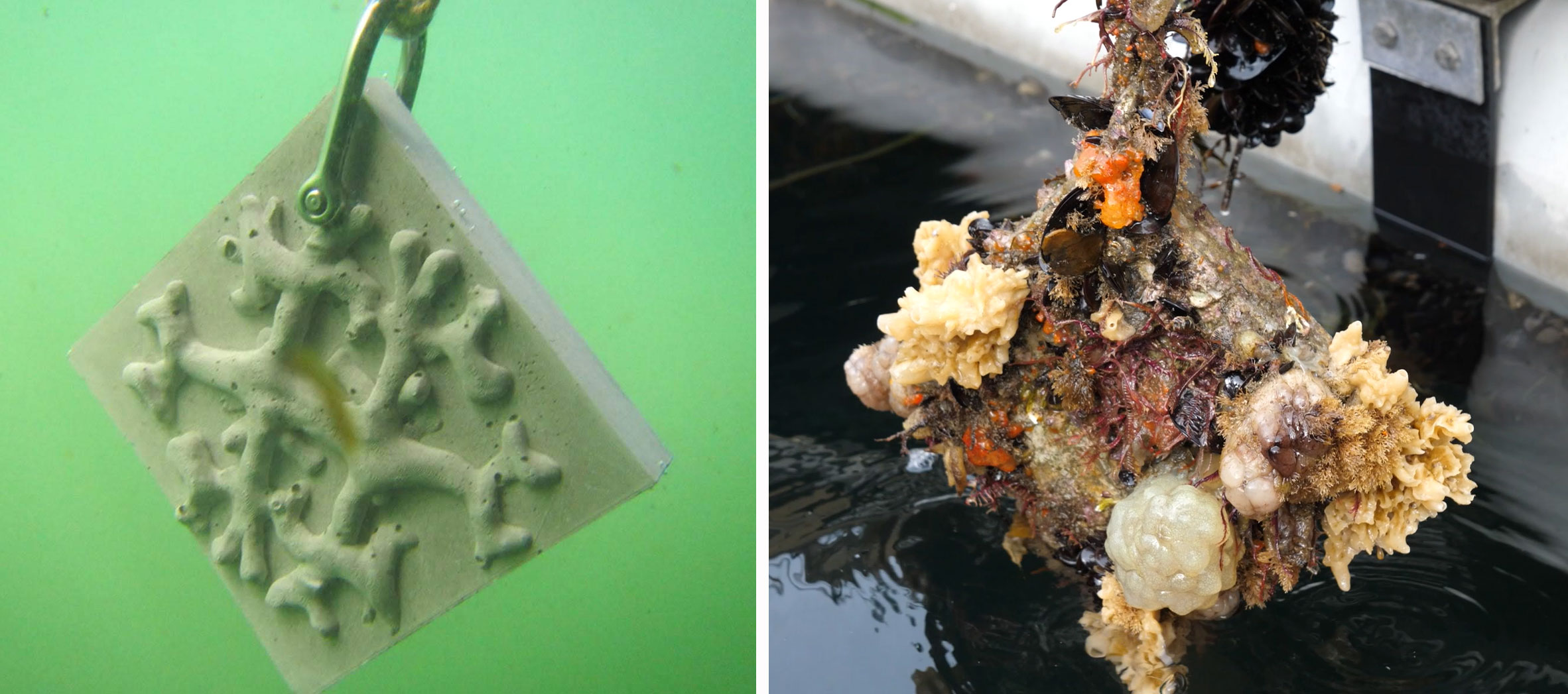
The PuertAlMar project set out to demonstrate how co-existence between human activities and the environment is possible, through conserving and restoring parts of the port while also benefitting the development of fishing activities. To help reach these ambitious goals, the University of Vigo designed innovative structures to recreate lost marine habitats within the port. These artificial structures were developed using “biomimetic” techniques that imitate elements of nature. The structures were then installed under existing pontoons to attract marine organisms.
Over the course of a year, the structures were monitored to evaluate the composition, abundance and diversity of the marine organisms settling on them. The functions of this new artificial ecosystem were then studied to understand its effect on socio-economic activities and especially the mitigation of climate change through CO2 fixation.
Moreover, to improve the connection between the port and the city, the project also implemented activities to raise awareness about the importance of improving the ecological status of the coastline affected by the port structures. This included installing information panels in the port, public dissemination campaigns (videos, brochures and handbooks) and the organisation of seminars, workshops, and open days to visit the port. These mobilised port staff, fishers, universities, schools, consultants and coastal engineering companies.
- Project locations
- Spain
- Overall budget
- €52 046
- EU contribution
- €37 47172% of the overall budget
- Project website
- Blue Growth Puerto de Vigo
Results
During 12 months of monitoring, more than 180 species relevant to carbon fixation were identified. The observations confirmed the adequacy of the biomimetic structures and their replicability in other ports.
Compared to the vertical walls of the dock, the biomimetic structures supported more species and larger amounts of biomass: 20 kg/m2, measured as dry weight of organic matter, compared to 8 kg/m2 on the bare concrete.
Carbon fixation on the artificial structures had tripled by the time they were last monitored, reaching up to 6 kg CO2/m2.
Five workshops were held, attracting more than 1,000 people and creating significant impact in the media and social networks.
Contact
Francisco Barreiro
- Name
- Francisco Barreiro
- Organisation
- Port Authority of Vigo
- carrerasazules
 apvigo [dot] es
apvigo [dot] es
